Travel blog Canterbury
As most of you know, I am totally fascinated by an Old English king: Alfred the Great. I am learning Old English (including the runes), read everything from and about King Alfred that I can get my hands on, and last summer, I made a trip through southeast England, looking for traces of my hero. For the Dutch travel website Reismuts, I reported on this varied journey, in text, music and photographs. This is a translation of the first blog of this series, about Canterbury.
There is a lot to do in the counties of Kent and Sussex. One of the many pearls in those beautiful regions in the south of England is Canterbury. A very picturesque medieval town, surprising and not far from home – perfect for a weekend away! I myself am a real train traveller. But thanks to the ferry to Dover – overlooking the beautiful chalk cliffs – Canterbury is also easy to reach by car or motorbike. You drive it in half an hour from Dover and that trip is a party in itself – especially on a sunny day.
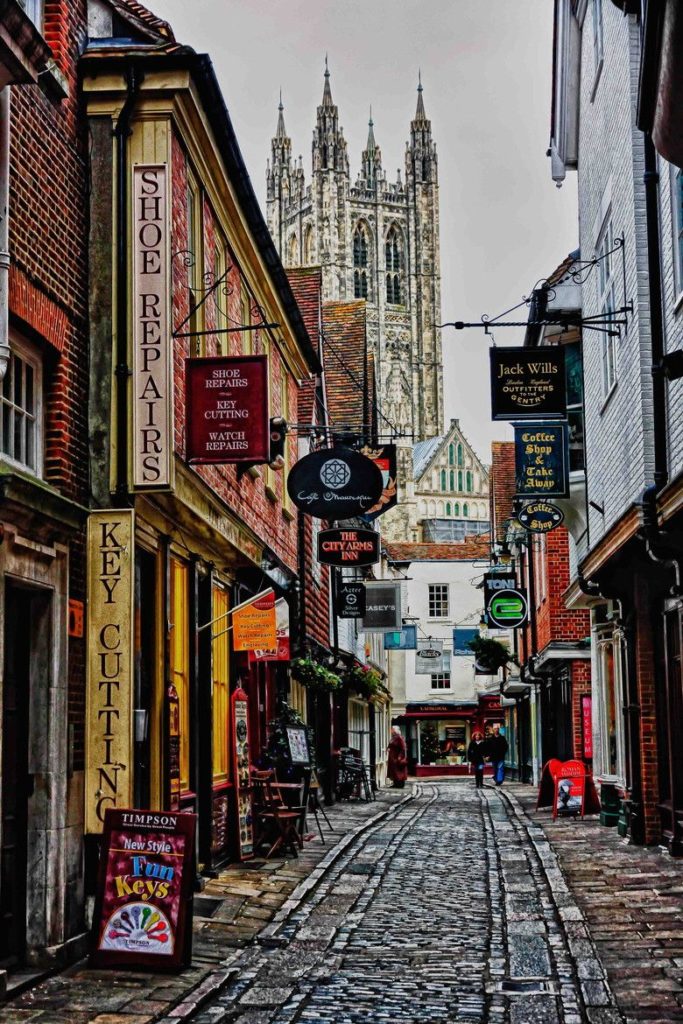
The Canterbury Cathedral
In Geoffrey Chaucer’s famous Canterbury Tales the pilgrims are on their way to Canterbury. From London they travel to Canterbury Cathedral, the big church in the city centre. Nowadays this is England’s most famous cathedral and it’s in its ascent (a five year renovation project, very educational). I would advise everyone not to skip a visit to this church. There is plenty to see and hear! Every day there are sung services and I found it a special experience to sing along in an Evensong. The architecture is partly Romanesque, partly Gothic and the church is beautifully decorated with several medieval murals and beautiful stained-glass windows.
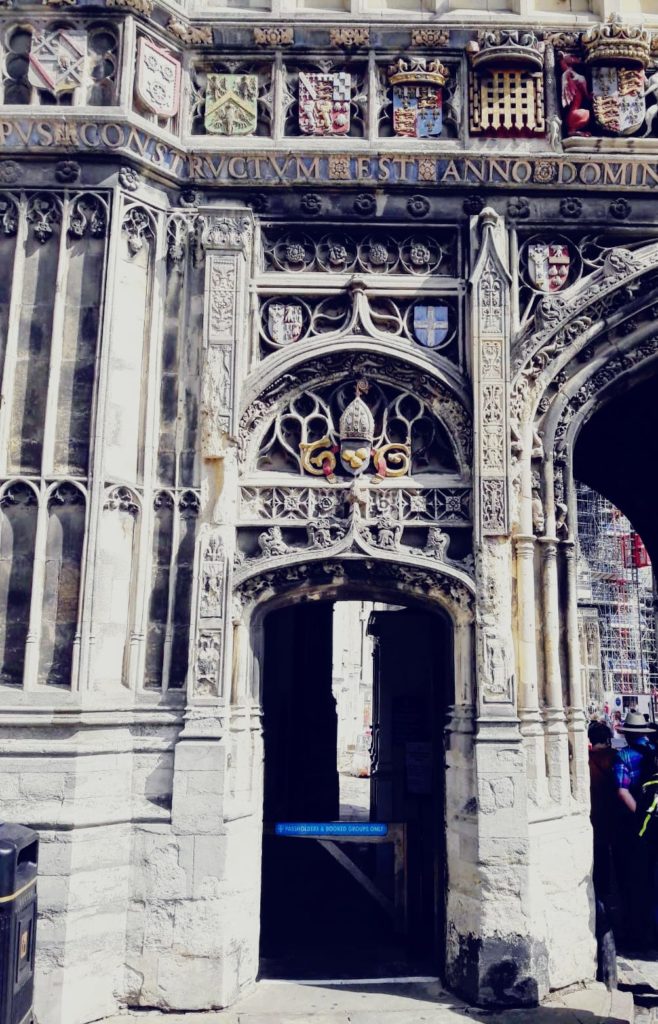
Along the aisles are statues of all kinds of English kings and queens. I recognized among others Æthelberht (560-616), but also Victoria (1819-1901) even Elizabeth II (*1926) – the current queen of England. The building also houses the famous relics of the medieval Archbishop Thomas Becket (1118-1160), who was murdered there. There is a permanent exhibition on the history of the church. In nicely arranged showcases, for example, you can learn more about its foundation (in 597). You will see beautiful books from the 8th century and films about how monks made those books. And you join in the exciting adventures of brave divers, who risked their lives for the restoration of this church. Take a stroll around the church. Look at the beautiful herb garden, the giant wooden horse and the Armenian cross.

The cosy city centre
Because of its rich past, Canterbury has a great atmosphere. And it is lovely and romantic to stroll through the cosy streets or take a stroll along the old city walls. Or take a boat on the Stour. With or without the guidance of real connoisseurs you can enjoy various lively tours with impressive views of the special city. In addition, you can go shopping in the car-free city centre. And because it is a student city, it also has a vibrant nightlife. In the words of travel blogger Lisette van Beek: “Whether you’re looking for alternative pubs, hip restaurants or traditional pubs, there’s something for everyone in Canterbury. Lisette went for the bustling Club Burrito (a trendy pub that is now closed). I chose The Lady Luck (alternative) and Café des Amis (Mexican). But there are a lot more nice dinner places to be found.
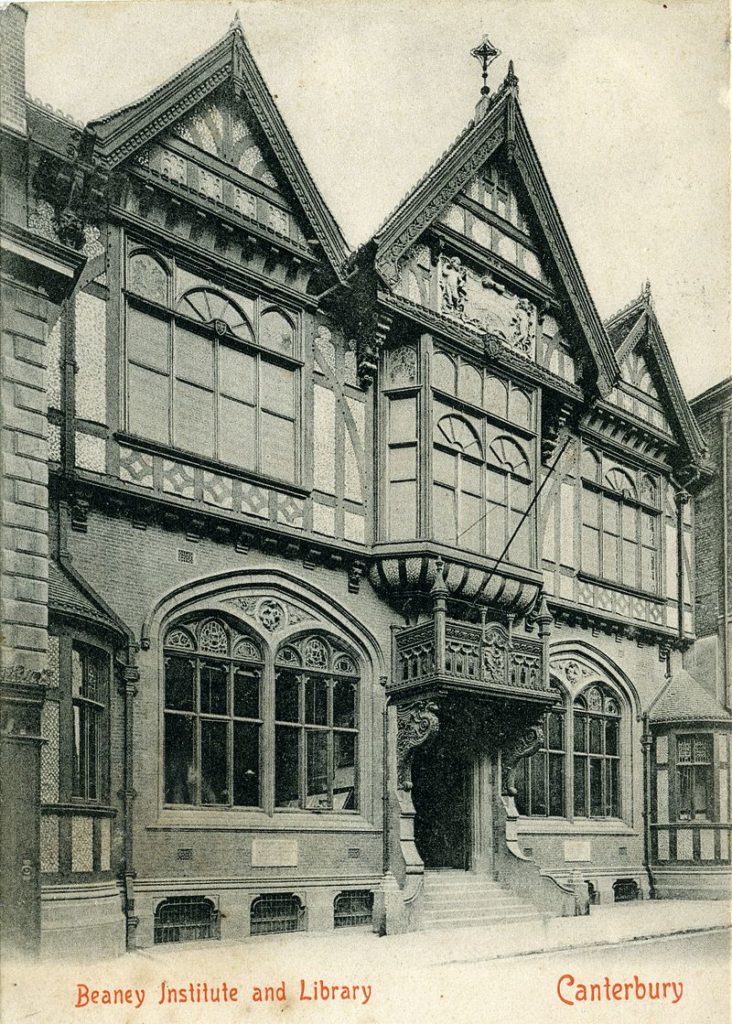
In the centre there are also several museums. In the Beaney House of Art and Knowledge – here on the old postcard I bought there – you’ll find works by local artists, beautiful Old English jewelry and an exhibition of typical English pet animals. Bruintje Beer – a white bear, uh… – I already knew from the song by Paul McCartney. His original name is Rupert. But I had never seen these funny organ mice. Another new found friend was Bagpuss, this adorable pink striped cat (that reminded me of the cat in Alice in Wonderland). The Beaney House also organizes changing exhibitions, when I was there you could look at modern pictures, among other things. Next to that it has a lively cafe with tasty cakes.
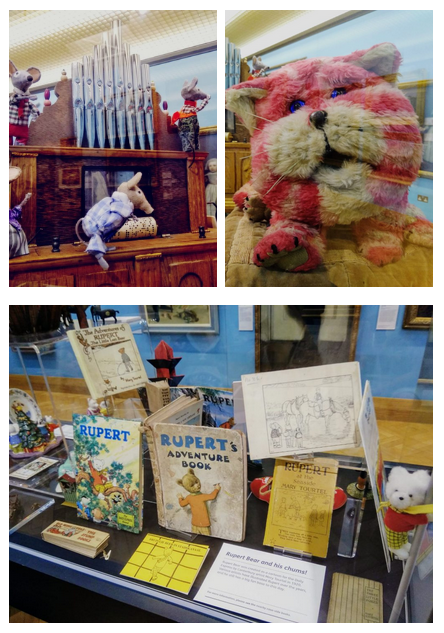
For me, the most beautiful museum in Canterbury was the Canterbury Roman Museum. Here you can see, among other things, a Roman floor of a ‘domus’. This is a town house for the richer class with an inward-facing drainage system. Ironically, this beautiful floor was discovered after a gruesome bombardment, during the second world war. The mosaic on the photo comes from the corridor of what used to be the domus and was probably laid around the year 300. The exhibition shows beautiful ceramics and gives interesting facts about jewellery and hairstyles of the Romans in “England”.
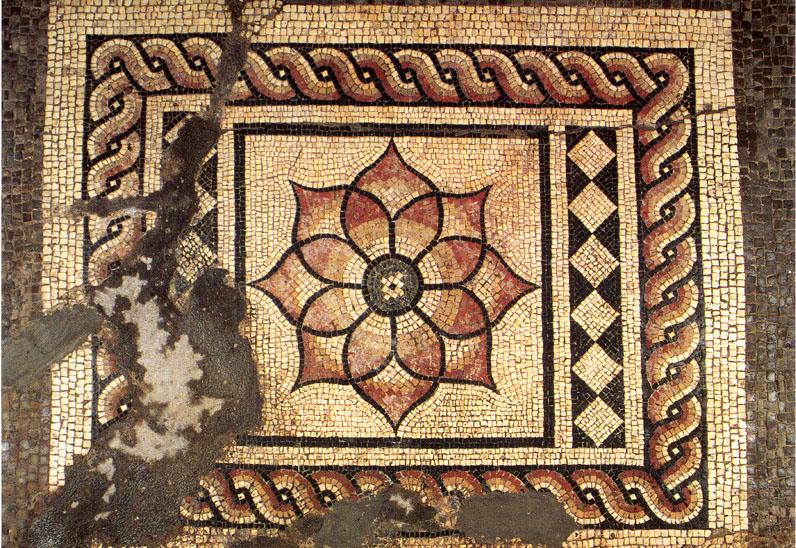
In short, the centre is really cozy, with all those little shops, interesting museums and pubs around the church, so amidst the typical English rolling landscape. You can eat out tasty and affordable – and there’s plenty of vega(n) choice – and the beers are good (especially at The Foundry pub and brewery). In December there is also an adorable Christmas market.
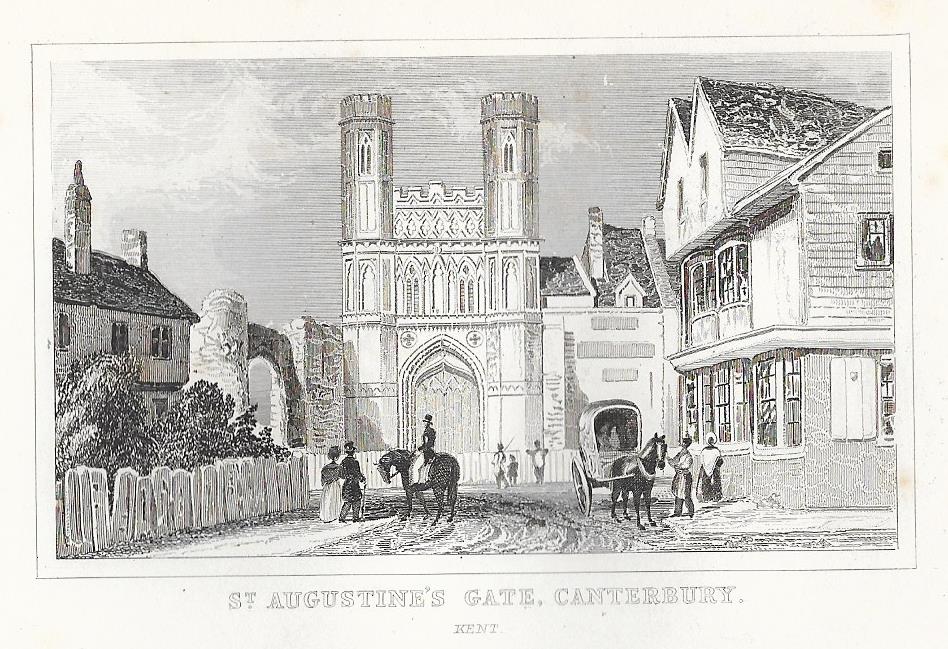
The oldest abbey in England
But don’t stay inside the city walls, because just outside – on the east side – you’ll find England’s oldest abbey. These ruins of St Augustine’s Abbey, over a thousand years old, and its associated St Martin’s Church were listed as World Heritage by UNESCO in 1988, along with Canterbury Cathedral. And with good reason: these buildings have played a key role in the history of south-east England.
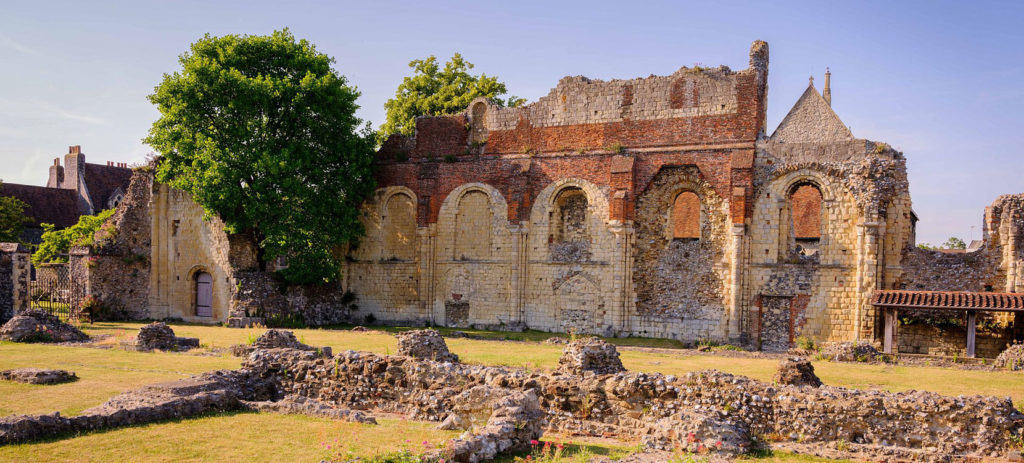
The Benedictine monastery was founded in 598 by St Augustine. He came to England by order of the Pope to Christianize the Anglo-Saxons. On this watercolour by Henry Tresham (1751-1814), from the Beany House, you can see an impression of Saint Augustine’s meeting with King Æthelberht (560-616). The harsh king Henry VIII (1491-1547) had the abbey destroyed. But there is still enough left to give you a good idea of what monastic life could have been like. Especially thanks to the beautiful and well-organized museum. On a beautiful day it is also just very relaxing to walk around the grounds with the audio tour on your head.

Much more to see & to hear
Sights I haven’t gotten around to include the Canterbury Tales attraction. This is a reconstruction of views, sounds and smells from Chaucer’s time and place. And the museum at the Westgate Towers (the history of this gate from 1379) and the Howletts Wild Animal Park (a zoo of 36 hectares). But that doesn’t matter, because I’m sure I’ll come back there someday. From the French Dunkirk you can sail to Dover in no time. And before you know it, you find yourself in a whole new world. Oh and then I’m also going to save up for the Silver Ring Workshop. There you’ll make your own “medieval” ring in three hours. As a memento of my journey and my new connections to Alfred the Great.
0 Comments on “Travel blog Canterbury”